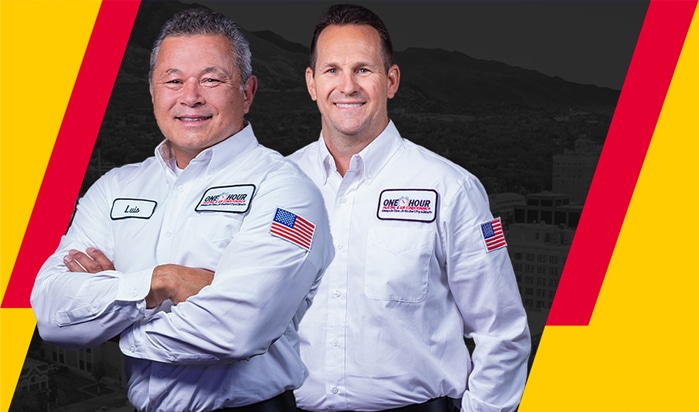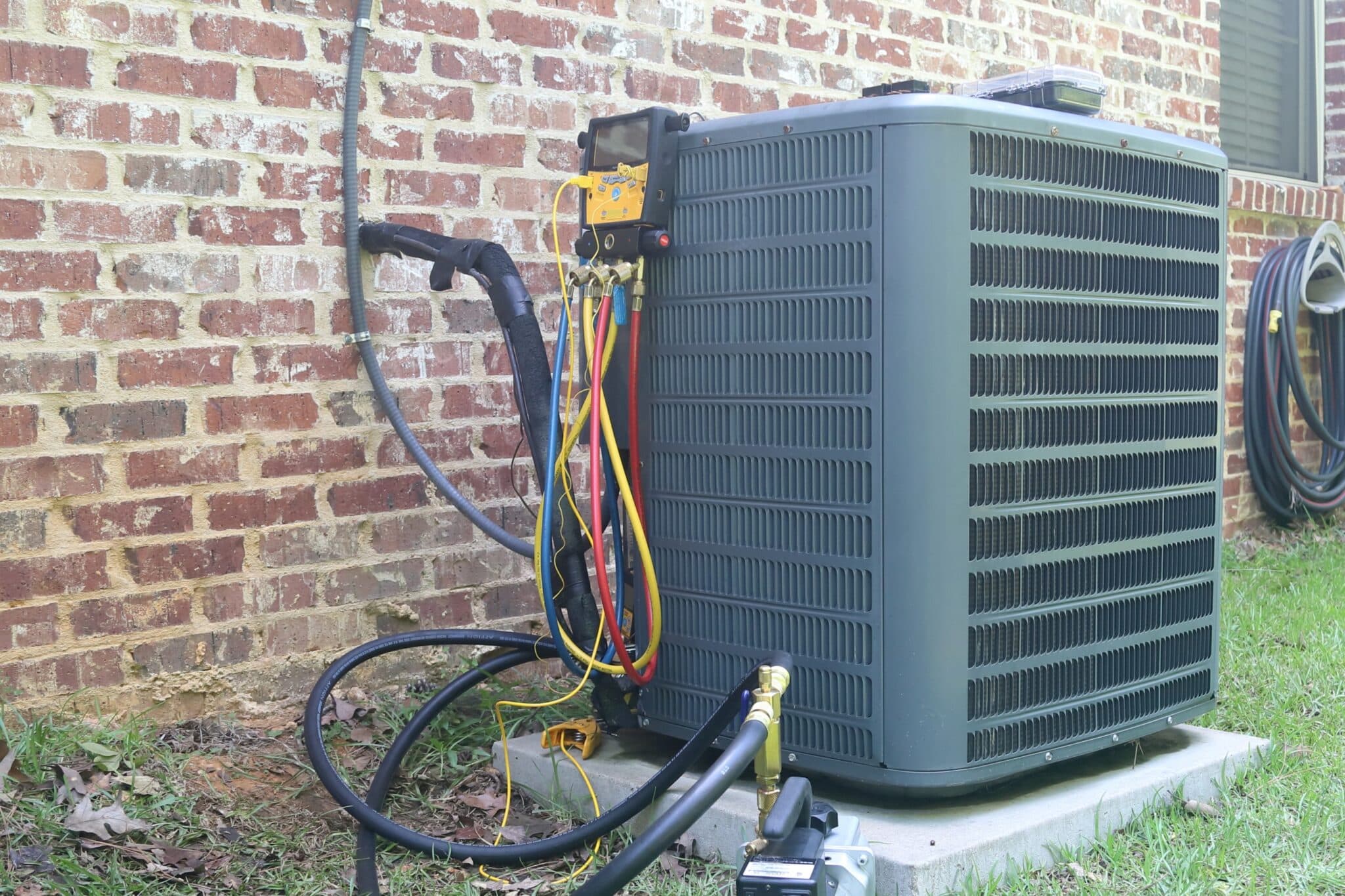March in North Ogden brings warmer days, making it the perfect time to switch from heat to air conditioning. But what if your AC not working leaves you stuck in stuffy air instead of cool comfort? It is a common problem after winter, but don’t worry. Knowing why your AC not working helps you take quick action and get your home feeling comfortable again.
Understanding Why Your AC Isn’t Working After Winter Use
As North Ogden welcomes warmer spring weather, it is time to switch from heating to cooling. But if your AC not working catches you off guard, you are not alone. After months of sitting idle, your cooling system may need extra care to get back in gear. The transition from heat to cool puts different demands on your HVAC system, and small issues can quickly lead to big problems.
Dust, debris, and worn parts often cause trouble when your AC kicks on for the first time. Components like capacitors, contactors, and coils may have weakened during winter. If refrigerant levels dropped or connections loosened, your system might fail to deliver the cool air you expect. That’s why homeowners frequently find their AC not working just when they need it most.
Addressing these issues early in spring saves time and stress later. At One Hour Heating & Air Conditioning of Ogden, our expert technicians know what to look for and how to fix it fast. We make sure your system runs efficiently, so you stay comfortable all season long. Do not wait until it is too hot—solve your AC not working problem now.

Checking Your Thermostat Settings Before Calling for Help
Discovering your AC not working after switching from heat can be frustrating, but the solution might be simpler than you think. Before you assume there’s a major problem, take a moment to check your thermostat. Small oversights are common after a long winter, and fixing them yourself can save time, money, and stress.
-
Confirm the Thermostat Is Set to Cool
It sounds obvious, but it is one of the most common mistakes. After months of running the heat, it is easy to forget to switch modes. Make sure your thermostat is set to “cool.” If it’s still on “heat” or “off,” your AC won’t run.
-
Lower the Temperature by At Least 5 Degrees
Next, check the temperature setting. You need to set it at least 5 degrees lower than the current room temperature. If not, your AC won’t recognize a need to cool the space, leaving you stuck in the heat.
-
Set the Fan to Auto, Not On
Finally, make sure the fan setting is on “auto.” If it is set to “on,” the fan might blow air, but it won’t cool properly.
If you’ve followed these steps and still find your AC not working, the problem might be dead batteries or faulty wiring. North Ogden homeowners can trust One Hour Heating & Air Conditioning for quick, reliable thermostat service that gets your system back to work fast.
Inspecting Your Circuit Breaker and Electrical Connections
Finding your AC not working after switching from heat can be frustrating, especially when spring temperatures start to rise. Often, the problem is not with the air conditioning unit itself but with the home’s electrical system. Power surges and outages are common during North Ogden winters and can trip your circuit breaker without warning. Before assuming a major issue, it is smart to inspect your electrical panel. These 3 essential steps can help you identify and fix a simple power issue.
-
Locate the Breaker for Your AC System
First, find the breaker labeled “AC” or “HVAC” in your electrical panel. If the breaker is stuck between “on” and “off” or fully in the “off” position, it is likely tripped due to a surge or overload.
-
Reset the Breaker Properly
Flip the breaker completely to the “off” position before pushing it firmly back to “on.” This action resets the circuit. If your air conditioner powers back on, the breaker was likely the problem.
-
Watch for Persistent Tripping or Other Issues
If the breaker trips again or your AC not working problem continues, it could indicate something more serious. Faulty wiring, overloaded circuits, or damaged components may require immediate professional attention to prevent further damage or safety risks.
Checking the circuit breaker is an easy first step. If the problem persists, addressing electrical concerns quickly ensures your cooling system runs safely and reliably as the warmer season sets in.
Dirty Air Filters Can Stop Your AC from Working Right
As North Ogden transitions into spring, many homeowners are surprised to find their AC not working after months of reliable heating. While it is easy to assume a major breakdown, something as simple as a dirty air filter is often the culprit. Air filters play a vital role in maintaining airflow and system efficiency, and neglecting them over the winter can lead to unexpected problems when switching to cooling. Below are 3 reasons a clogged air filter can leave your AC struggling to function.
-
Reduced Airflow Lowers Cooling Efficiency
Over time, dust, pollen, and debris accumulate in your system’s filter. When airflow is restricted, your air conditioner has to work harder to circulate cool air. This strain reduces its ability to cool rooms evenly, making your home less comfortable and your AC not working effectively.
-
Excessive Strain Can Overheat the System
Restricted airflow does not just reduce cooling; it can also cause internal components to overheat. Many modern systems are programmed to shut down automatically when temperatures inside the unit get too high. If you find your AC not working, overheating due to a clogged filter might be the cause.
-
Frozen Evaporator Coils Stop the Cooling Process
Poor airflow can also cause the evaporator coil to freeze. Once frozen, the system cannot remove heat from the air, leaving your AC not working and your home feeling warmer than it should.
Check and replace your air filter regularly, especially in early spring. Clean filters help prevent unnecessary strain and keep your AC running smoothly throughout the warmer months.
Refrigerant Levels Might Be Low After a Long Winter
After months of sitting idle, many cooling systems experience issues when turned on in spring. One common problem is low refrigerant, which often leads to your AC not working properly. Refrigerant plays a key role in the cooling process by transferring heat out of your home. Without enough of it, the system struggles to deliver cold air.
Leaks can form during winter when connections contract from freezing temperatures. Even small leaks lower refrigerant levels, which prevents the system from cooling efficiently. Low refrigerant may also cause ice to build up on the evaporator coils. Once those coils freeze, it often results in your AC not working at all.
Typical signs of a refrigerant issue include warm air blowing from the vents, reduced airflow, or hissing noises from the outdoor unit. You may also notice your energy bills climbing, even though the system is not keeping your home comfortable.
Refrigerant should never run low unless there’s a leak. A professional technician must locate and repair these leaks before recharging the system to proper levels. Ignoring the issue risks costly damage and further strain on the equipment.
If you find your AC not working as temperatures rise, having refrigerant levels checked early can prevent bigger problems later.

Outdoor Condenser Coils May Be Dirty from Winter Debris
If you are dealing with your AC not working as spring arrives, the problem may be dirty outdoor condenser coils. Over the winter, Utah’s strong winds, snow, and debris often accumulate around the exterior AC unit. Leaves, dirt, and other materials can clog the condenser coils, blocking airflow and reducing the system’s ability to release heat effectively.
When the coils are coated with debris, the air conditioner has to work much harder to cool your home. Poor airflow around the coils reduces efficiency, causing the system to overheat or shut down altogether. This often results in your AC not working just as the temperatures in North Ogden begin to rise.
Check your outdoor unit for obvious signs of debris buildup in early spring. If you see leaves, twigs, or a thick layer of dust and dirt on the coils, it is likely impacting your system’s performance. Although you can clear some debris away from the unit, a professional cleaning ensures the coils are thoroughly cleaned without damaging delicate components.
A clean outdoor unit improves efficiency and reduces the risk of breakdowns. If your AC not working becomes a problem, a clogged condenser coil is often the hidden reason.
Capacitors and Contactors Might Have Worn Out Over Winter
When you switch on your cooling system and find your AC not working, it may be due to worn-out capacitors or contactors. These components play a vital role in starting and operating your air conditioner. The capacitor delivers a quick energy boost to power the compressor and fan motor, while the contactor controls the flow of electricity to those essential parts.
During the cold winter months in North Ogden, these components sit idle for long periods. Freezing temperatures and moisture can cause capacitors to weaken or fail, preventing them from holding a charge. Contactors can become stuck or corroded, interrupting the electrical connection. As a result, you may experience your AC not working when you need it most.
Common signs of failing capacitors or contactors include clicking sounds when the system tries to start, a continuous humming noise, or no response from your AC unit. If the compressor or fan motor does not engage, these components are often the cause.
A professional technician can safely test and replace these parts. Addressing these issues early ensures your air conditioner operates efficiently through the warmer months. Do not ignore signs of trouble—early repairs prevent small problems from becoming costly breakdowns.
The Importance of Regular HVAC Maintenance in North Ogden
Regular HVAC maintenance is one of the easiest ways to avoid the stress of your AC not working when temperatures climb in North Ogden. After months of sitting idle during winter, your cooling system needs a thorough check before it is ready for spring and summer. Without maintenance, small issues can turn into costly breakdowns, leaving your AC not working when you need it most.
Seasonal tune-ups help identify problems early. Technicians clean condenser coils, inspect electrical connections, and check refrigerant levels to ensure the system runs efficiently. They also test critical components, like capacitors and contactors, which can wear out after a long winter. These services reduce the risk of your AC not working unexpectedly.
Regular maintenance does not just prevent breakdowns—it also improves energy efficiency. A well-maintained system uses less energy to cool your home, reducing monthly utility bills. It also helps extend the life of your equipment, saving you money in the long run.
Do not wait for the inconvenience of your AC not working on a hot day. Schedule preventive maintenance with One Hour Heating & Air Conditioning of Ogden. Regular AC service ensures comfort, efficiency, and worry-free cooling all season long.
When It’s Time to Consider an AC System Upgrade
There comes a point when keeping your old air conditioner running costs more than it’s worth. If you are frequently dealing with your AC not working, it may be time to consider upgrading your system. Here are 3 clear signs it is time to make the switch.
-
You’re Constantly Scheduling Repairs
If breakdowns are becoming a routine headache, your system is probably past its prime. Constant repairs not only drain your wallet but also leave you at risk of your AC not working when you need it most.
-
Energy Bills Keep Climbing
Older systems lose efficiency. If your energy bills are rising, even though your usage hasn’t changed, your AC may be overworking. Newer units are more energy-efficient and can save you money over time.
-
Your System Is 10 Years or Older
The typical air conditioner lasts 10 to 15 years. If yours is approaching this age—or beyond—it’s time to explore your upgrade options. New models offer better cooling, quieter operation, and increased reliability.
Take action before your AC not working becomes a bigger problem. Upgrading now ensures reliable cooling, lower energy costs, and peace of mind during North Ogden’s hottest months.
DIY Troubleshooting vs. Professional HVAC Repairs
Noticing your AC not working can be stressful, especially during the warmer months in North Ogden. Some problems have simple solutions you can handle on your own. Others require professional expertise to fix safely and correctly.
Begin by reviewing basic issues. Check your thermostat to make sure it’s set to cool and the temperature is lower than the current room temperature. Inspect the air filter; a clogged filter reduces airflow and can impact cooling. Lastly, examine your circuit breaker to confirm power is reaching your system.
Persistent problems indicate something more serious. If your AC not working after these simple steps, the issue may involve refrigerant leaks, electrical faults, or worn-out components. These repairs should only be handled by licensed HVAC professionals with the right training and tools.
Trying to repair complex systems without proper experience risks damaging the unit or creating safety hazards. Hiring a professional ensures accurate diagnostics, effective solutions, and long-term reliability.
Do not leave your comfort to chance. If your AC not working becomes a recurring problem, schedule professional repairs to keep your home cool and safe throughout North Ogden’s hot summer season.
Trust One Hour Heating & Air Conditioning This Spring
Finding your AC not working after months of heating use is common in North Ogden. Seasonal changes, debris buildup, and worn components often prevent systems from operating efficiently when spring arrives.
Scheduling maintenance early ensures your air conditioner runs reliably as temperatures climb. Technicians inspect refrigerant levels, clean condenser coils, and check vital components like capacitors and contactors. This proactive approach helps prevent costly breakdowns and keeps your system efficient.
At One Hour Heating & Air Conditioning of Ogden, UT, we understand how important comfort is. Our skilled professionals offer thorough inspections and timely repairs, ensuring your cooling system works at peak performance throughout the season.
Spring is the ideal time to prepare your system for heavy summer use. Early service reduces energy costs, extends equipment life, and gives you peace of mind.
Make comfort a priority—schedule your spring maintenance with One Hour Heating & Air Conditioning of Ogden, UT today and avoid the stress of an AC not working during North Ogden’s hottest days.
FAQS
-
Why is my AC not working after switching from heat?
After a long winter, systems often develop issues like dirty air filters, tripped breakers, or clogged outdoor condenser coils. In some cases, components such as capacitors or contactors may fail due to sitting idle in cold conditions. A professional inspection can quickly pinpoint the cause.
-
Could a thermostat problem cause my AC not working situation?
Yes! Incorrect settings are common. Ensure your thermostat is set to “cool” mode, and the temperature is lower than the current room temperature. If the thermostat is malfunctioning or the batteries are dead, it may prevent the system from turning on.
-
How do I know if my refrigerant is low?
Signs of low refrigerant include warm air from vents, ice on refrigerant lines, and longer cooling cycles without reaching the desired temperature. Low refrigerant levels require a licensed technician to locate leaks and recharge the system safely.
-
Can I fix my AC not working issue myself?
You can perform basic checks like replacing dirty filters, verifying thermostat settings, and resetting a tripped breaker. However, refrigerant leaks, electrical issues, and component failures require professional HVAC repair for safe and lasting solutions.
-
How can I prevent my AC from not working next spring?
Schedule regular HVAC maintenance in early spring. Professional tune-ups catch minor issues before they become major problems, ensuring reliable cooling all season long. Preventive care also extends the life of your system and improves efficiency.





